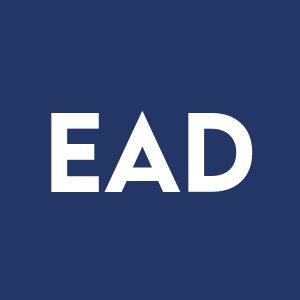Wells Fargo Closed-End Funds Declare Monthly Distributions
The Wells Fargo Income Opportunities Fund (NYSE American: EAD), the Wells Fargo Multi-Sector Income Fund (NYSE American: ERC), and the Wells Fargo Utilities and High Income Fund (NYSE American: ERH) have each announced a distribution.
Ticker |
Fund name |
Distribution per
|
Frequency |
Change from
|
EAD |
Wells Fargo Income Opportunities Fund |
|
Monthly |
+ |
ERC |
Wells Fargo Multi-Sector Income Fund |
|
Monthly |
- |
ERH |
Wells Fargo Utilities and High Income Fund |
|
Monthly |
- |
|
|
|
|
|
The following dates apply to today’s distribution declaration for each fund:
Declaration date |
|
March 26, 2021 |
Ex-dividend date |
|
April 12, 2021 |
Record date |
|
April 13, 2021 |
Payable date |
|
May 3, 2021 |
These funds make distributions in accordance with a managed distribution plan that provides for the declaration of monthly distributions to common shareholders of the fund at an annual minimum fixed rate of
The Wells Fargo Income Opportunities Fund is a closed-end high-yield bond fund. The fund’s investment objective is to seek a high level of current income. The fund may, as a secondary objective, seek capital appreciation to the extent it is consistent with its investment objective.
The Wells Fargo Multi-Sector Income Fund is a closed-end income fund. The fund’s investment objective is to seek a high level of current income consistent with limiting its overall exposure to domestic interest rate risk.
The Wells Fargo Utilities and High Income Fund is a closed-end equity and high-yield bond fund. The fund’s investment objective is to seek a high level of current income and moderate capital growth with an emphasis on providing tax-advantaged dividend income.
The final determination of the source of all distributions is subject to change and is made after year-end. Each fund will send shareholders a Form 1099-DIV for the calendar year that will tell shareholders how to report these distributions for federal income tax purposes.
For more information on Wells Fargo’s closed-end funds, please visit our website.
These closed-end funds are no longer engaged in initial public offerings, and shares are available only through broker-dealers on the secondary market. Unlike an open-end mutual fund, a closed-end fund offers a fixed number of shares for sale. After the initial public offering, shares are bought and sold through broker-dealers in the secondary marketplace, and the market price of the shares is determined by supply and demand, not by NAV, and is often lower than the NAV. A closed-end fund is not required to buy its shares back from investors upon request.
High-yield, lower-rated bonds may contain more risk due to the increased possibility of default. Foreign investments may contain more risk due to the inherent risks associated with changing political climates, foreign market instability, and foreign currency fluctuations. Risks of international investing are magnified in emerging or developing markets. Funds that concentrate their investments in a single industry or sector may face increased risk of price fluctuation over more diversified funds due to adverse developments within that industry or sector. Small- and mid-cap securities may be subject to special risks asso







